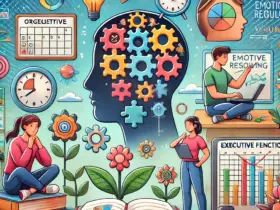Table of Contents
- The Concept of Holistic Language Acquisition
- Why Traditional Language Learning Falls Short
- Strategies for Holistic Language Learning
- Benefits of Holistic Language Acquisition
- Implementing Holistic Language Learning in Educational Settings
- Overcoming Challenges in Holistic Language Learning
- The Future of Language Learning
The Concept of Holistic Language Acquisition
Holistic Language Acquisition is a comprehensive approach to learning languages that integrates listening, speaking, reading, and writing. Unlike traditional methods focusing on rote memorization and isolated exercises, holistic language acquisition fosters engagement and fluency through immersion and practical usage. This approach is particularly effective because it mimics how we acquire our first language naturally.
Holistic methods encourage a more intuitive and comprehensive grasp of communication by creating an environment that immerses the learner in multiple aspects of the language. For example, learners participate in conversations, listen to native speakers, and read authentic texts rather than studying vocabulary lists. This organic integration assists in incorporating the linguistic and cultural subtleties of the language.

Why Traditional Language Learning Falls Short
Traditional language learning methods often isolate different language components rather than integrate them. This segmented approach can create disjointed language skills where learners can read and write but need help with speaking and listening.
For instance, a student could do well in grammar activities but need help to engage in live conversations. This difference emphasizes the constraints of conventional approaches that do not accurately mimic real-life language usage. By combining formal teaching with hands-on experiences, a comprehensive method helps learners naturally use language.
Strategies for Holistic Language Learning
- Immersive Experiences: Engaging with native speakers through conversation clubs or language exchange programs can be invaluable. This real-life interaction not only improves verbal skills but also boosts cultural understanding.
- Multifaceted Input: Combining various forms of media, such as books, movies, and music, for diversified exposure helps learners understand different contexts and usages of the language. This multimedia approach ensures learners are exposed to the language in various settings and formats.
- Interactive Applications: Another effective strategy is utilizing language-learning apps that offer interactive methods for practicing all four language skills. These apps often use gamification and real-time feedback, making learning engaging and comprehensive.
Benefits of Holistic Language Acquisition
Holistic language learning emphasizes a natural and intuitive grasp of the language, moving away from rote memorization to understanding it as a dynamic form of communication. This approach improves retention and practical use of the language in various contexts, such as ordering food or discussing cultural traditions, enhancing communication’s depth and effectiveness. Additionally, making learning enjoyable through engaging activities increases learners’ motivation and perseverance, leading to long-term success.
Implementing Holistic Language Learning in Educational Settings
Educational institutions are gradually incorporating holistic language learning strategies into their curricula. By adopting multifaceted teaching methods that blend traditional techniques with innovative tools, schools can provide students with more engaging and effective language learning experiences.
Programs that offer bilingual education or dual immersion are excellent examples of this implementation in action. These programs integrate language learning into various subjects, allowing students to learn in a context-rich environment. For instance, a science class taught in Spanish covers the scientific content and enhances language skills.
Overcoming Challenges in Holistic Language Learning
Incorporating a comprehensive approach to language learning may present difficulties, such as resource constraints and accommodating various learning preferences. Nevertheless, overcoming these challenges by utilizing technology, encouraging community involvement, and customizing educational experiences to meet individual requirements is possible. Continuous feedback and adaptation are crucial to success in holistic language learning. Teachers and learners must remain flexible, using tools and methods that best meet their needs. Collaboration with native speakers, utilizing online resources, and participating in immersion programs can significantly enhance the learning experience.
The Future of Language Learning
The future of language learning is set to transform with the advance of technology, mainly through adaptive learning technologies and AI-driven tools. These innovations promise personalized, comprehensive instruction, making language learning more accessible, efficient, and enjoyable. AI-enabled platforms will create customized learning experiences tailored to an individual’s pace and interest, focusing on improvement areas. This approach aims to optimize the learning process, enabling learners to meet their goals more efficiently.





